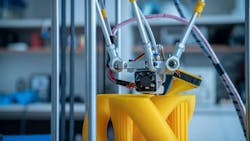Handling High Power Density in Additive Manufacturing (Download)
Today’s designers are now more equipped to achieve high power density in power electronics applications. One excellent example of this is a method known as additive manufacturing (AM). A flyback AC-DC power converter using AM needs three-dimensional (3D) integration for passive and active components, particularly when working with industry-standard parts.
3D printing makes it possible for designers to produce the flexibility to construct diversified plastic carriers from varied materials, but without the need for expensive tooling. And, still, it enables complex structures for thermally, electrically, and mechanically improved setups.
